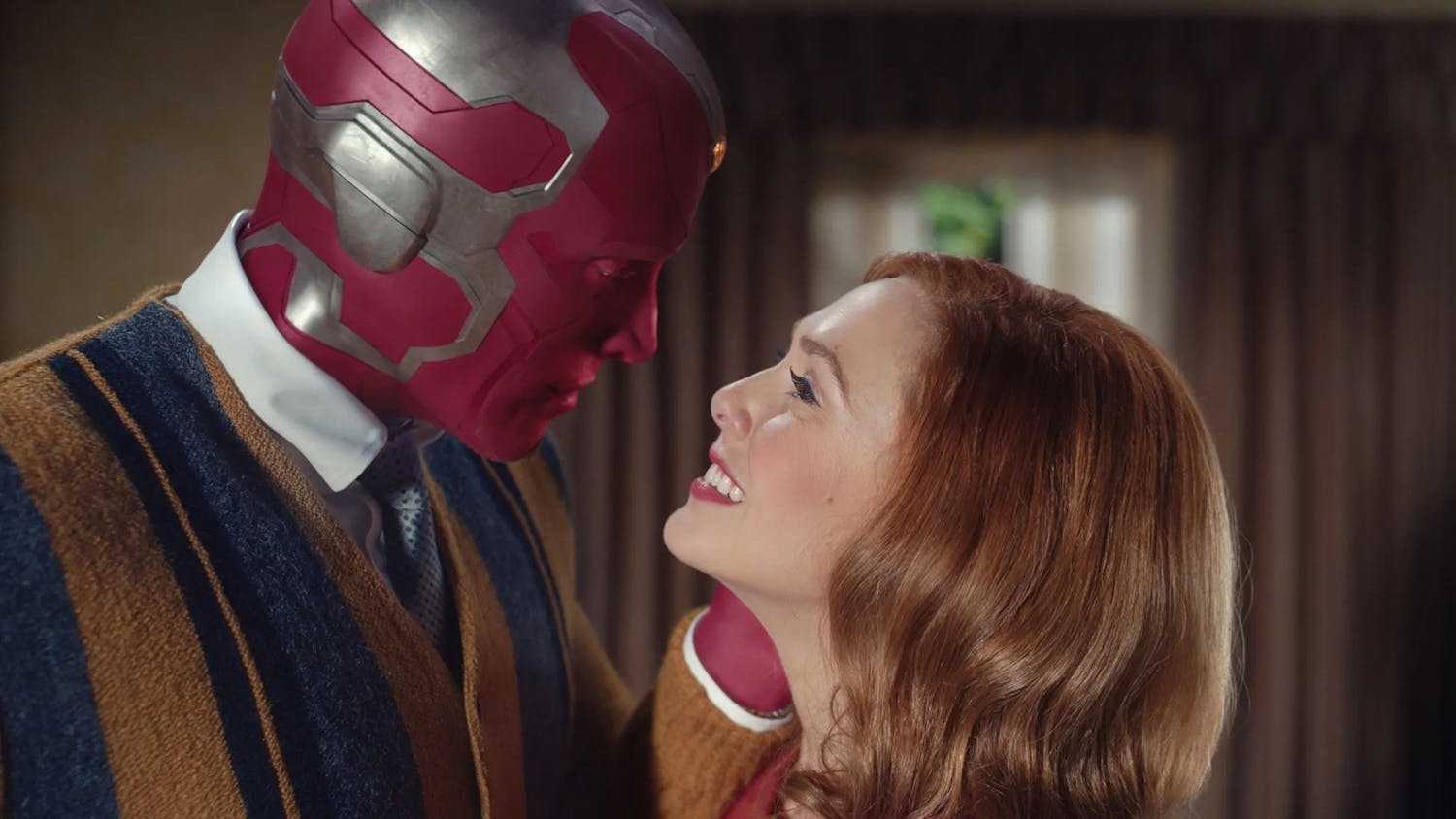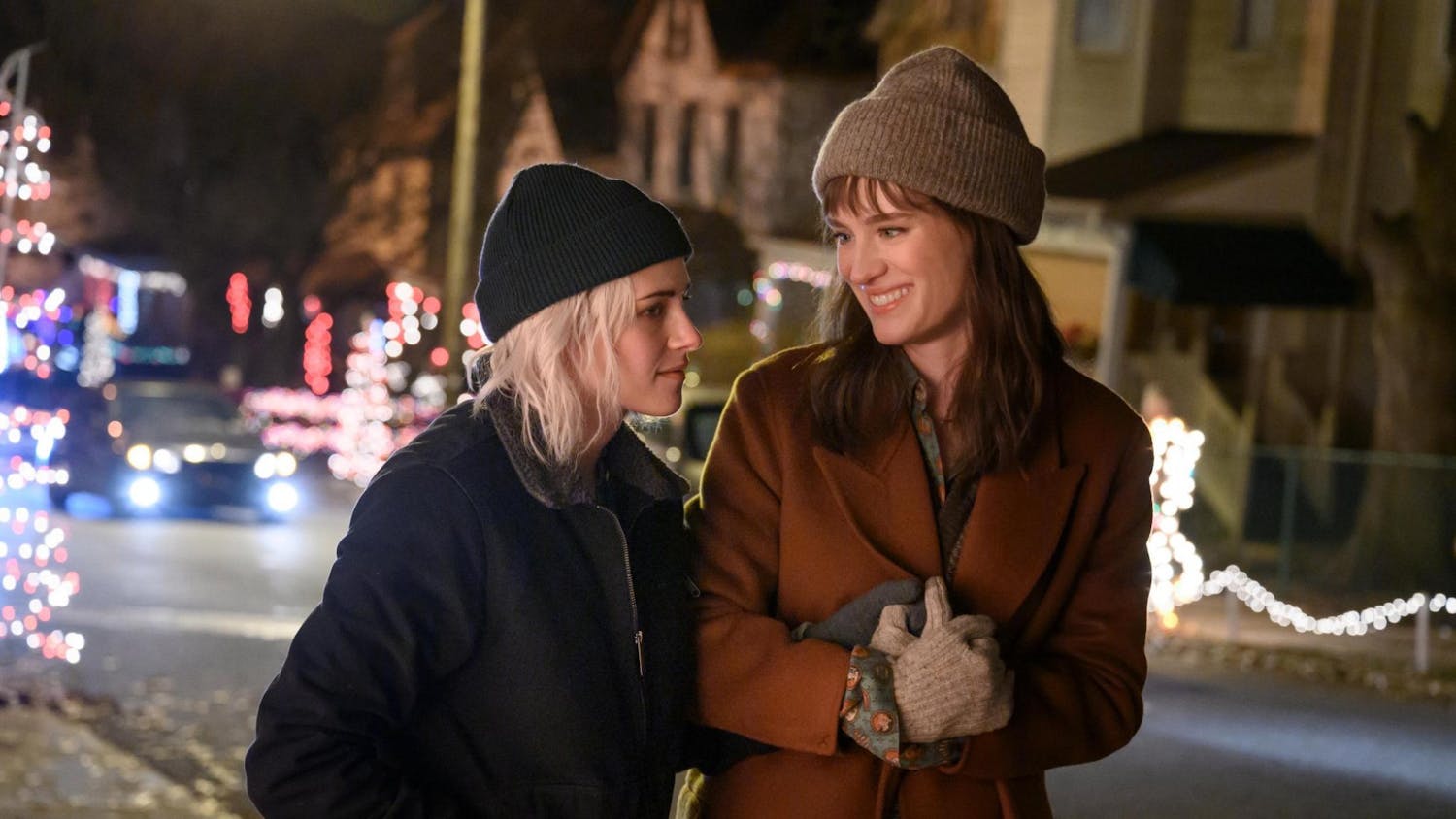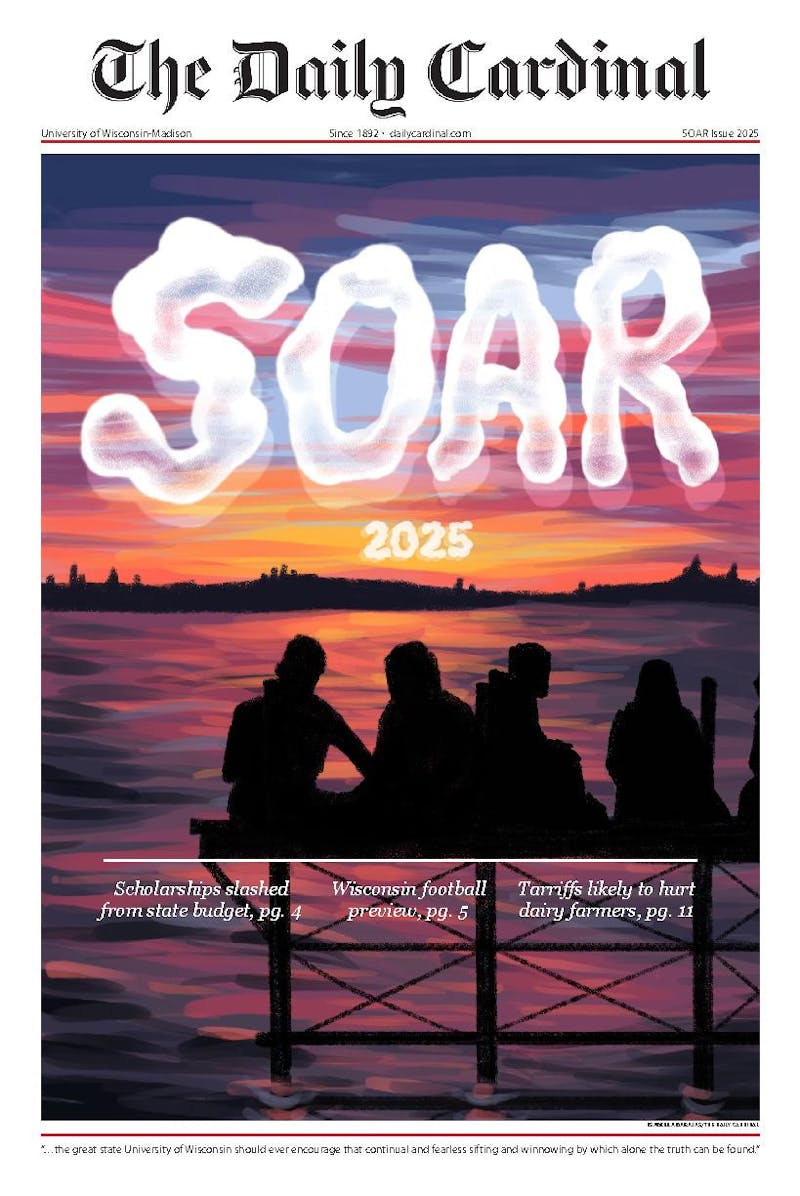The Daily Cardinal recently spoke with Wisconsin native and co-founder of the Found Footage Festival, Nick Prueher, about the unique artform of found footage and the festival’s upcoming show “Best of the Midwest” at the Barrymore Theatre Nov. 30.
The Daily Cardinal: What is your favorite type of film to work with? I know you do a lot with training tapes and a variety of other things.
Nick: Yeah, well, the favorite thing for me to find is a home movie because those are the hardest [to find], people don’t just leave those around at thrift stores on purpose. So those have either been left by accident, or occasionally we’ll buy a VHS camcorder at a garage sale and someone will have forgotten to eject the tape out of there. So you get this half-recorded home movie. I like it because it feels voyeuristic. It’s like a window into somebody’s life. And those are usually boring, but when you find a good one it’s just the best.
DC: Do you have one or two in particular that stand out to you?
Nick: Yeah, there’s one we found at a Salvation Army in Marshfield, Wisconsin, which is kind of smack-dab in the center of the state. And it was labeled “Kirk’s 40th Birthday,” “K, I, R, K,” “Kirk’s 40th Birthday, May 1992.” And we’ll be showing this in Madison. But it was this guy, this biker, who had fixed his motorcycle for his birthday. And it’s him and his buddy and his wife and his attention-starved kids celebrating his birthday. And at one point they make a cake that’s in the shape of a female torso, and he bites one of the cupcakes off of it. And it’s kind of this little day-in-the-life of this guy. And, you know, I grew up in Stoughton, so this guy was like my neighbor, you know? It just feels like I had neighbors like this. So it’s fun to get this small slice of life of Kirk and his friends.
DC: How many videos do you watch before you find one where you say to yourself, “Yes, this is the perfect video”? Because it seems like you could go through a lot. And it seems like it could be a time-consuming process.
Nick: Yeah it’s a very small ratio. I’d say maybe 5 percent of the videos we find are worth including in the show. So yeah, we might go through 100 videos and only five of them will be good. Because there’s a lot of bad videos, but it has to be bad in just the right way. Whatever it was trying to do, it has to fail at it in some entertaining, over-the-top way to be unintentionally funny. So that’s kind of the criterion we’re looking for. And it’s one of arduous, boring viewing. We also try not to fast-forward, because you never know when you might miss something. So that’s where the hard work comes in, is watching all the videos. That’s kind of where we’re at in the process now.
DC: I know you’ve done a lot of touring. Throughout all your touring in America and other places have you encountered audiences that didn’t really get what you were doing, or appreciate it? Or did you come across any criticisms, and what did those sound like?
Nick: That’s a good question. We do occasionally get walkouts. I think people just don’t know what to expect. So we were on a 50-state tour last year, and for the first time we were in South Dakota, and probably the last time too. But this arts group brought us [into] this very conservative town that sort of smelt like manure. We looked up in the audience, and I don’t know why, I’m always a little bit unsettled when it’s mostly elderly people. And that was it—it was mostly older people, like my parents’ age and older, so senior citizens. Which is fine, we get a lot of NPR-loving seniors who care about our show, and it’s great. You know what, it was good because I would say three-quarters of the people really dug it and loved the show. But there were maybe a handful of walkouts. And we opened that particular show with a live child birth on camera—so it doesn’t really give a chance to kind of catch your breath. If you’re not expecting what the show is, then you shouldn’t be there, that’s fine. But that was one where we got a mostly older, conservative audience, and I think we had a handful, maybe five to 10 walkouts during the show at different points. And we try not to take it too personally because the show isn’t for everybody. In general, we’ve been surprised at how universal the appeal is. You know, we started doing this show, kind of a crude version of it, in Stoughton growing up, just having friends over and making jokes about videos we had found. So it still feels very much like an inside joke, you know, something that just you and your friends find funny.
We did this show in Paris last year… and you never know, culturally it’s so different and language barriers and all that stuff. But I guess what we’ve found is the language of ridiculous videos is universal. You know, people laugh in the same places and at the same times and, like I said, we get older crowds, younger people and all sorts of nationalities. So it’s been surprising to us how many people like this very specific brand of comedy that we’re doing.
DC: That actually goes into my next question. Growing up in Wisconsin, do you think your upbringing influenced this artwork that you’re doing? And the Madison show is called “Best of the Midwest”—I know you said people everywhere have been responding pretty similarly, but do you think there’s something particularly Midwestern or American about found footage as an art form?
Nick: Yeah, to answer the first part of the question, I think it definitely influenced us growing up in Wisconsin because, you know, we grew up in a small Midwestern town and there wasn’t a lot going on. We had to entertain ourselves, so we thought to make our own fun by going to thrift stores. And that was just this goofy thing that we did. I think a lot of videos that ended up in thrift stores were like your mom’s exercise videos that she didn’t watch anymore. Or the video your dad bought that came along with the beard trimmer he bought on how to use it. So you get all this weird esoteric stuff and there weren’t a lot of movies ending up in thrift stores really, it was more like self-help videos, instructional tapes, exercise videos and things like that. And we really responded to those kinds of things.
When we’re looking for videos in southern California and New York, we find different kinds of material—independent films and public access footage and things like that. So in the Midwest I think because there isn’t really a show business, there’s not much of a movie industry, we find all these industrial-type videos. A lot of industrial videos, corporate videos, are made where their corporate headquarters are, which are Minneapolis, sometimes Illinois, where McDonald’s was based, and all that kind of stuff. We gravitated toward the videos we were finding in the Midwest, which were mostly training videos, exercise videos, things like that. And I think there’s a certain Midwestern sensibility that we bring to the show, which is, I think the show isn’t mean-spirited. I see shows like “Tosh.0” and things like that and I don’t really respond to those because there’s kind of meanness to it. We’re certainly making fun of the videos and having light of them, but we genuinely love these videos. They’ve provided so much entertainment. And our kind of M.O. is that we want to be able to have the people in these videos in the audience and they’ll find it funny too. So I think the show’s not mean-spirited and that probably comes from our Midwestern upbringing. We don’t try to be snarky about it; it’s a celebration of these ridiculous moments that ended up on video. Is there a second part of the question that I’m forgetting?
DC: Do you think there’s something Midwestern or American about found footage as an art form itself?
Nick: Oh. I don’t know, I think what we’ve proven, or what the show has proven is that there’s not really a regional boundary to appreciating this kind of material. But I think our particular take on it is uniquely Midwestern, you know? And I worked on the show “Mystery Science Theater 3000” coming right out of college.
DC: Oh, really?
Nick: Yeah, I was working on that right out of college and I was a fan of it before that. There’s kind of like an “aw, shucks” sensibility to that, which we definitely bring to the table as well.
DC: How do you decide how much to edit a film? Do you ever feel like you’re doing too much or too little when you edit it?
Nick: Yeah, great question. We definitely spend a lot of time on the editing and one of the things we wrestle with is how much to edit. And our overall theory about that is that the videos are pretty goofy on their own, and we don’t have to mess with them too much in order for them to be funny. I’ve seen other video art stuff and things on the web where they manipulate things and slow it down and kind of chop up the edits, and our feeling is we kind of let the videos be the weird part and we don’t have to insert ourselves into the editing to make them funny. Certainly we do spend a lot of time on the editing and what to include and what not, and where you place something. But our overall theory is to try to keep the spirit of the video intact. Sometimes their editing choices in the video are funnier than anything we could ever do on our own. We definitely have internal arguments about what to include and what not, but our overall theory is to let people see the videos as we see them basically—keeping in mind that we wouldn’t wish it upon anybody to sit through this stuff in its raw, unedited form. We’ve built up a high tolerance over the years.
DC: Have you discussed making a feature-length film of found footage?
Nick: Well, our DVDs are all feature-length. They’re all 90 minutes. Those are basically recorded versions of our show. And the show itself is feature-length. Each show that we do is a 90- to 100-minute live show. But a movie, I don’t know if that would work. What I like about the show is that it’s in a live setting. And I think that something you miss, especially in this day and age of Internet videos, is you know, you can get this link sent to you on your Facebook or your inbox that’s funny, but you watch it on a little two-inch window on your laptop by yourself, you know? But when you’re in a room full of people who are there to laugh, something magical happens. It’s a transformative thing—you remember it and you want to come back. That experience is a thing we really appreciate, which is why the primary thing to do is tour. We try to create this sort of living-room-in-Stoughton experience wherever we are. To me that’s the preferred format to watch it.
DC: When people were making the cheesy VHS tapes you often use, they obviously weren’t thinking you were going to be slicing them up and turning them into comedy. Are there any contemporary forms of visual media that you can tell right now are going to be the future of found footage, or is that something you haven’t really thought about that much?
Nick: I do think about that because at some point we will have found all of the VHS tapes. We have occasionally dabbled in DVD, because the stuff in thrift stores is about 20 years behind where current media is, so we’re finding more and more DVDs now. We found one called “Sing Like The King” in Memphis, which was a training video for Elvis impersonators, by an Elvis impersonator. You see them giving tips and they’re sitting in their Elvis outfits in the audience, very strange. So you know, we’ve started to dabble a little bit in DVD now. And I don’t really know what the future will be. I do know there are people who carry web videos and stuff like that now and there’s definitely value to that. But for us it doesn’t have the same charm because you can type “funny cat” into a search engine and come up with videos. And to us half the fun is the discovery part of it. We really like digging around in thrift stores and finding video in a dumpster and the story behind that. We share those stories at the show. I don’t know how our show will evolve with that. Maybe we’ll find hard drives that have video that end up in thrift stores. I’ve heard of people finding SD cards from cameras and they have videos. So those are new formats we could find. We have other stuff we collect that we find at thrift stores like answering-machine tapes. We just pop out the tapes. There are all sorts of different media that you can do things with. And I think for us, we’re really just trying to do physical media instead of things we find online.
DC: Is there anything you want to add about the Madison show or any other specifics about FFF?
Nick: Well just that it’s a lot of stuff we found in Stoughton and in Madison, so it will ring true to a lot of people who grew up there or live there now. We have a special guest coming to that show, who is somebody we tracked down from a 1994 public access show that aired on WYOU. It was like 2 in the morning and we scrambled for tape and got like half of it on tape. It became this cult thing, you know, amongst my friends. It’s called “One Kid’s Opinion.” And it was this goofy kid’s review of Disney Land. He’s trying to talk like an adult and he does these green screen effects. We tracked down this guy and he was living in New Orleans but just recently moved back to Madison, and we have so many questions to ask him. It’s going to be like us meeting Tom Cruise or something. He’s like a celebrity. We’re going to be fanboys for a little bit having this kid, who’s now like 35 or something at the show. That’s one kind of local angle we’ve got. One other thing I like to mention is if anyone has found videos, we get to Madison maybe twice a year over the holidays, but if anybody has found videos in the area, we always like to feature local videos. Please bring any finds to the show.





